QuestionQUESTION: I took my geckos out of their habitat to add a heating pad under the glass repti-cage. While they were in the BIG bowl which was well ventilated and a heating pad underneath, they changed color. They were all a darker color which is what we see everyday, but when we took them out of the bowl to put them back in their aquarium, they were bright colored. What would cause this??
ANSWER: HI Dena,
I think you have anoles and not geckos. Do you mean the little lizards pictured here? http://en.wikipedia.org/wiki/Carolina_anole
If yes, then the reason they turned green in the bowl is most likely that their tank isn't warm enough and being in the smaller bowl, there was more heat. Be sure to measure your temperatures in your tank, and provide both their needed uvb(more in care sheet) and also heat from a regular light bulb during the day from above.
Here is a basic care sheet on the anoles:
Adult anole size is up to 9 inches.
Males generally have a larger dewlap than females. Males are larger than females. Males have a brighter, larger red throat,Females MAY keep the stripe down their back. Mature males have a hemipenes bumps on either side of their tail base.I believe anoles are considered mature when they reach about 5 inches snout to tail tip length.
TEMPERATURES:
They need a basking area temperature gradient of 85-93 degrees. These temperatures are needed to properly digest their foods. The basking area is one area of their cage. The overall or ambient temperature of their tank gradient upper 70-s to 80 degrees. 75 degrees for a cool area. Temperatures of 65-75 at night is fine. NEVER use heat rocks or heat caves for Anoles!! They malfunction and will cause death to the anole.
LIGHTING:
Anoles need UVB, which is the special lights that come in fluorescent tubes UVB is needed by the anoles
to be able to absorb the calcium in the foods they eat.
With out the uvb, they will develop metabolic bone disease.
With the tubes, they must say that they produce BOTH uvb and
uva. The uvb needs to be 5% or higher. Repti Sun 5.0 are
one of the best uvb tubes on the market.The "Iguana light" is the same tube, just different packaging. There is also a reptil sun 10.0 tube that is very very good. The repti glo 8.0's are testing out to be a great uvb source also. The 5.0 and 8.0 need to be positioned 6-8 inches over the anole so that they get the uvb that is needed. The 10.0 can be 8-10 inches above the Anoles level. The tubes need to be replaced every 6-9 months as that they stop producing uvb long before they stop producing light.
There are tubes that say ''full spectrum'' but they do not produce any uvb.
There has been new studies that have proven that compact uvb lights, both the spiral/coil type and the ones that look like long "U's" laying on their side and a few other brands are causing what basically amounts to snow blindness in reptiles. To read more on this, you can go to
http://www.uvguide.co.uk/index.htm Here is a link to a letter from RZilla on their product: http://www.zilla-rules.com/assets/006/13278.pdf
For daytime heat, if using the tube uvb, regular household
incandescent lightbulbs produce heat. The wattage will
depend on the size of your anoles enclosure. At night you need to provide a heat source in the form of a ceramic
heat emitter(which can also be used during the day) or a
special nighttime bulb(red or deep purple) that does not
produce any bright white light if the temperatures drop below the recommended night temperatures. Undertank heaters can also be used to add lower heat to the tank. At night, they muct have darkness...no white/bright lights.
DIET:
Anoles eat daily. They are insectivores. Their food must not be too big for them (no larger than 1/2 the size of their head. All insects that are fed to them must be properly gut loaded for at least 48 hours before feeding them. Crickets, silk worms,trevo worms, wax worms are all part of their varied diet. Many will even eat babyfood fruits and possibly the meats. They are used as treats(once or twice a wk) and are wonderful for hydration. The Gut loading is feeding the insects a nutritious diet prior to feeding the insects to the anoles. This can be accomplished with feeding a recommended "diet" for the insect. ( http://www.anapsid.org/feedingbugs.html ) The crickets can be fed vegetables and cereals. Chicken laying mash is a good choice of food for the crickets as are other commercial foods designed for crickets.Their food needs to be dusted with calcium powder (rep cal calcium with no added phosphorus or vitamin D3 is a good brand) two times a week. Some may eat a bite or two of fruit. A vitamin should be used once a week. Rep Cal Herptivit is a good brand. Be sure to remove any crickets your anole has not eaten after 20 minutes or so to prevent the crickets from nibbling on your anole. Keeping your crickets well fed will help prevent this. Place a piece of cut potato in the tank.
HOUSING:
A 20 gallon tall or larger tank or mesh vivarium is recommended for an Anole. As with almost all reptiles, its best to house them separately. Males can NEVER be housed together as they will fight over territory. Females MAY get along, but doesn't always happen.
Provide several basking branches and plants (silk and plastic)for your Anole. Be sure that all plants and branches are well anchored. For substrate(flooring) the best is plain unprinted newspaper or paper towels... its cheap and easy to clean..and the best part is its safe. Paper towels and lizard carpeting may also be used. Some of the soil mixes are ok to use also.
Stress is the usual cause of an anole turning brown. Stress with them can be caused by incorrect temperatures, other animals that they see, incorrect or no uvb, housing problems (not "natural" enough for them with plenty of plants, etc) housing two males together, (or just two that do not get along)tank not large enough ( for two anoles(male and female or possibly two females)
WATER:
Their water consumption is from dripping leaves. Misting the tank is important. Humidity needs to be in the 60-70 % range. Be sure to provide a small dish of fresh drinking water daily.
This is by no means a complete caresheet on anoles. Please be sure to check out the following link for more in-depth anole care.
http://members.aol.com/Mite37/TPFGA.html
Also, its a good idea to find a Vet before one is actually needed. Reptiles need vets that are trained to treat them. You can find a vet in your area by going to
http://www.anapsid.org/vets/
http://www.arav.org/Directory.htm
---------- FOLLOW-UP ----------
QUESTION: Hi, thanks for the fast reply. But I definitely have Geckos, 3 of them. They are leopard geckos, all female. I have a hide den for them that has moss in it and I dampen it everyday. I just bought a bigger one because I thought the small den was too small for all three as they would lay on top of one another and step on each other. They have another log hide, a hammock, a small artificial tree, their water bowl and a worm bowl. I thought they were getting a little darker in color because they are growing, but when I put them in the plastic bowl to add the heating pad to the bottom of the cage, they were bright color. One is a high yellow with the black patterns, the other two are orangish in color with a touch of black - like stripes across the back.
AnswerHi Dena,
Sorry for the confusion, but with the Geico ins commercial, many people confuse the anole with a day gecko in the commercial.
This time I will include my leo care sheet for you!!
It still may have been due to the smaller space they had...more heat, and being confined to a smaller area, causing stress...along with the stress of "you changed my house". When you put them back in the tank, did you by any chance add a different over head light? The type of lighting can also render a different color to them. You are correct that they do change colors as they mature...ah..if only the normals could keep those gorgeous patterns they have as babies!!!
Yours sound like very nice colors.... I have a tremper albino and a very colorful normal....both rescues.. which they both seem to be "brighter" when they first come out of their warm hides...which I never really thought about until you mention it now.
BASIC CARE FOR A LEOPARD GECKO
Leopards are pretty easy to care for but they do need
special care. Here are some of the basic needs of your gecko.
HOUSING: The need to have at least a 20 gallon long tank for one Leo. This needs to have a secure fitting screen top...they can be quite the escape artists!!! They need to have a humid hide box.You can make this with something as simple as a small plastic dish with a hole cut in one side and a small mesh bag filled with some Sphagnum moss coconut bark or Peat moss that you mist.
I made mine out of the small plastic folgers coffee containers...I cut an opening in the lid..and put the moss in..they LOVE it. I use the terrarium moss in mine.
I use that on the warm side of the tank. Be sure to provide a cool hidebox on the other end. I also provide a mid temperature hide...which is in the middle of the tank.I use the critter caves which you can purchase. NOT the ones that have heat in them!!!!
Provide secure climbing areas for your gecko. Fake plants, rocks and branches are all fine to use. be sure there are no wires or sharp ends to any fake plants you use.
*****SUBSTRATE:(that's the stuff on the floor of your tank) Newspaper, lizard carpet or paper towels work great and are easy to clean and are much safer than any loose substrate. Sand or other loose substrate is not recommended as that they can be deadly to the leo when it is ingested(eaten, even by accident while eating their insects)...A very graphic site of an impacted leo surg can be seen at http://homepage.mac.com/exoticdvm/reptile/PhotoAlbum181.html it is very graphic!!! ******What I have found that works great for safety and heat distribution is using about 1/4 inch of childrens play sand(since the tiles fit tight together, there is no sand danger) on the bottom of the tank and on top that you place ceramic or slate floor tile. What is nice is that the 12 x 12 squares fit perfect in a 20 gallon tank with no spaces between the tiles. The sand and the tile distribute the heat wonderfully. Using the under tank heater as described is what distributes the heat. Also, overhead heat will help in heating the tiles...I've been using this set up for several years and the leos love it. Using a tile that isn't smooth is recommended. **********
TEMPERATURES: They need a warm area of 88-92 degrees and a
cooler area in the upper 70s, low 80s. At night their temperature can drop to the low to mid 70's.
Never use a hot rock for a leopard gecko...or any reptile.
They can severely burn any reptile. You can use a heating
pad under the tank,under tank heater, or you can use a regular household lightbulb in a dome fixture with a ceramic socket in it to keep the warm area at the 88-90 degree area.At night, no white light. If room temperatures stay above 70 degrees, no extra night heat is needed. The undertank heater or heating pad should cover about 1/3 of the tank....be sure to raise the tank up about 1/4-1/2 inch off the stand when using an undertank heat source to prevent heat build up which can cause the glass to break and hot spots in the glass. Be sure to have a good layer of newspaper, carpeting or, even a thin flat rock(such as tile) on top the area that the undertank heat source is placed...if you use a thin rock or tile, it helps to distribute the heat very well.
You can use the special nighttime lights that are designed for reptiles. I like using a ceramic heat emitter on a thermostat for nighttime heat.
DO NOT use black lights or party lights as they can cause eye damage!!!!
The wattage you use will vary based on room temperature and size of tank.
LIGHTING: Leopard geckos do not need UVB lighting but it does not hurt them to give them uvb. They should have some type of light during the day, be it a uvb tube, regular florescent light, reptile day light or regular household lightbulb. NO white lights at night!!!
FEEDING: Geckos should not be fed crickets or other insects that are bigger than the space between their eyes. Generally, hatchlings can be fed more than once a day,juvys can be fed twice a day, adults are fed once daily or every other day, in the early evening. Crickets and other food items such as silk worms, super, and an occasional treat of a wax worm, need to be dusted with a calcium supplement two times a week and also they should have a small dish of calcium in their tank. I use the lid of a milk jug for the little dish of calcium in their tank. For dusting the insects, Use a calcium with no added phosphorus. Insects must be gut loaded(fed) for at least 48 hours prior to feeding your gecko. Remove any uneaten crix or superworms after 15-20 minutes..... Place a piece of cut potato in the tank so that if you have missed any uneaten insects, they will eat the potato instead of nibbling on your gecko!!!
*************You have to be sure to feed your crickets and insects the right foods before feeding them to your gecko. If your crickets/insects are not healthy and well fed, your gecko will not get the nutrition he needs. You can gut load your crickets and insects greens, veggies, cereals or specially designed commercial foods for crickets or the insects you are feeding. ************
Be sure to have a small dish of clean water for your gecko at all times!!
You can offer them some baby food or fruits on occasion ...
Mine will even eat a small piece of watermelon now and then.WATER: always provide a dish of drinking water. If you choose to mist your gecko to drink, its best to not get the tank too wet as that they do not do well with higher humidity. Sometimes its better to take your leo out of their tank to mist them to get them to drink!!!
HANDLING: Some geckos enjoy being held...others prefer not to be handled at all. Be sure to be very gentle when holding your leo and NEVER grab them by the tail! Their tails are extremely fragile and will break.
I do suggest finding a vet that can treat reptiles BEFORE you actually need one!!! To find a vet that is able to care for reptiles:
http://www.anapsid.org/vets
http://www.arav.org/Directory.htm
For more information on leopard geckos:
http://www.thegeckospot.com/leocareindex2.html
http://www.drgecko.com
If you have any questions or don't understand something, please let me know.

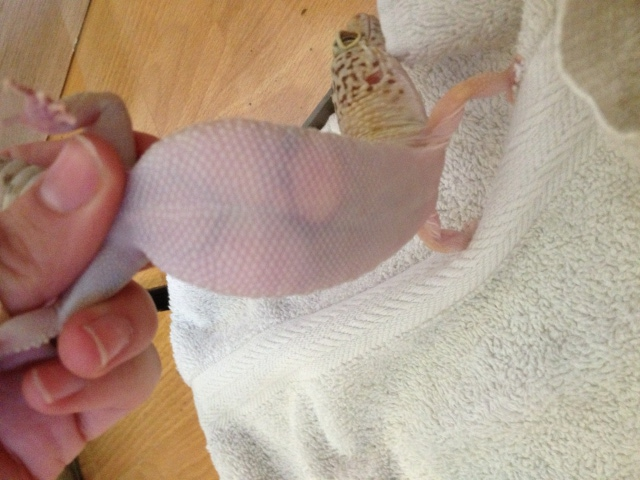 Gravid ?
QuestionOreo
Oreo
QUESTION: Does my femal
Gravid ?
QuestionOreo
Oreo
QUESTION: Does my femal
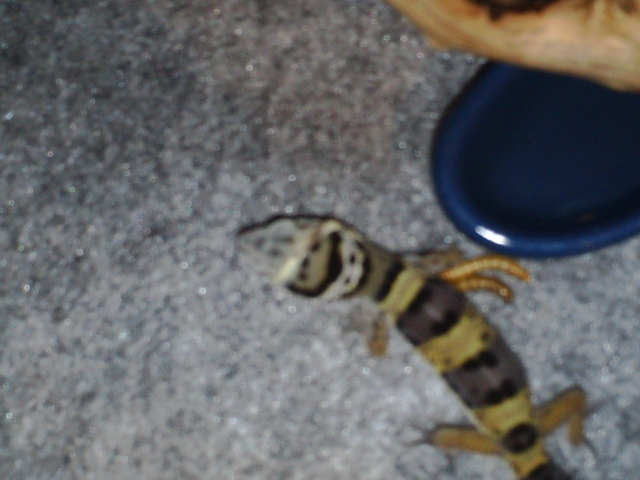 Temperature
QuestionStuck skin on geckos h
QUESTION: My leop
Temperature
QuestionStuck skin on geckos h
QUESTION: My leop
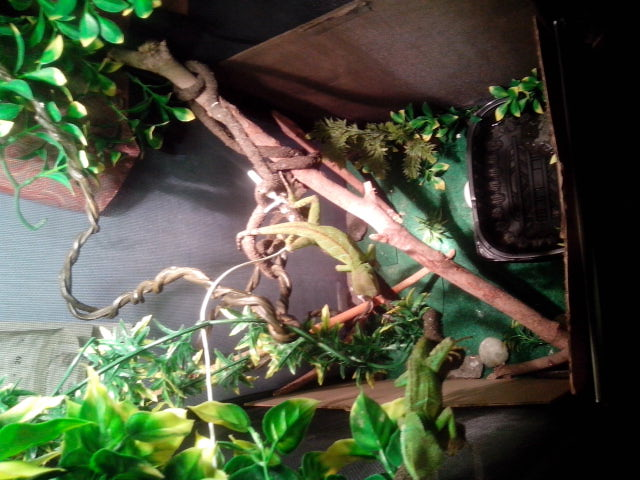 nose rub
Questionyoite and raikou new h
His mouth
nose rub
Questionyoite and raikou new h
His mouth
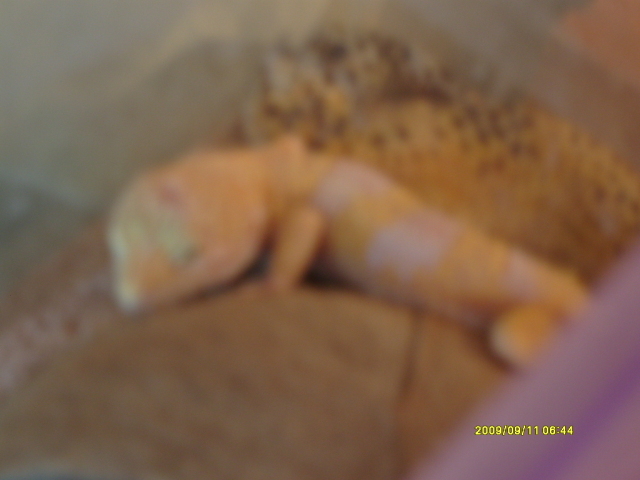 Just Got her...
Question
Tia Dalma
Hi Diane,
I have two Leopard Geckos
Just Got her...
Question
Tia Dalma
Hi Diane,
I have two Leopard Geckos
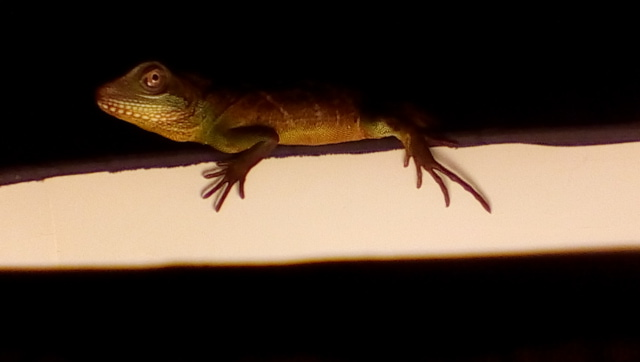 My water dragons skin, humidity, and temperature
QuestionFrank, last week
QUESTION: I have a wat
My water dragons skin, humidity, and temperature
QuestionFrank, last week
QUESTION: I have a wat